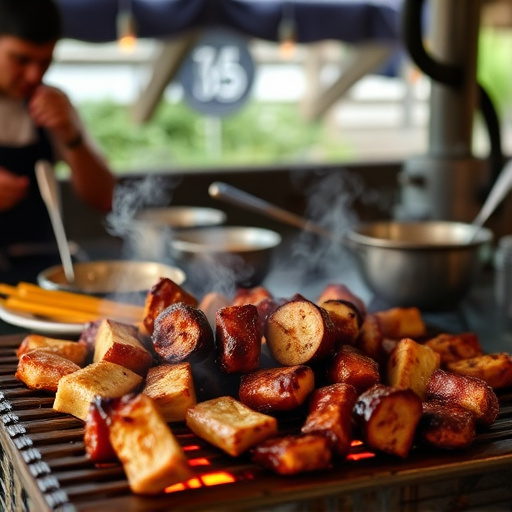Selecting the right rib cut is key for an excellent BBQ ribs recipe. Opt for meaty, marbled varieties like Baby Back or St. Louis-style ribs, ensuring quality from reputable sources. Consider cooking time and technique, as different cuts render nicely on the grill, producing a blend of tender meat and crispy exteriors. The three most popular cuts—Baby Back, St. Louis Cut, and Spare Ribs—each have distinct shapes and flavors suitable for various grilling techniques. Proper storage and preparation, including seasoning with a dry rub and marinating, ensure juicy, tender ribs that will impress any crowd.
Unleash your inner BBQ master and create a culinary masterpiece with perfectly grilled ribs! This comprehensive guide takes you on a journey from choosing the right ribs to mastering the art of seasoning, grilling, and finishing. Learn about different rib cuts, how to select premium quality, and prepare them for that mouthwatering flavor explosion. Discover the secrets to indirect cooking, dry rubs, marinades, and sauces that will transform your ribs into a true BBQ sensation. Elevate your grill game with this step-by-step approach and craft a BBQ rib creation that’s sure to impress!
- Choosing the Perfect Ribs for Your BBQ Masterpiece
- – Types of ribs: Baby back, St. Louis cut, and spare ribs
- – Selecting quality ribs: Freshness, marbling, and age
- – Tips for storing and preparing ribs before grilling
Choosing the Perfect Ribs for Your BBQ Masterpiece
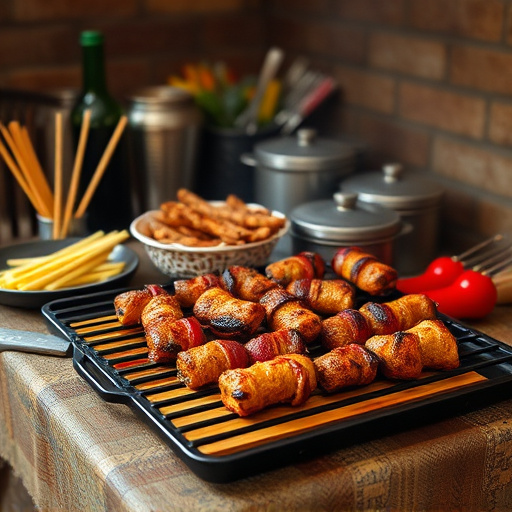
When it comes to crafting a barbecue masterpiece, the choice of ribs is paramount. Look for meaty, marbled cuts like baby back or St. Louis-style ribs, ensuring each bite is packed with flavor. Quality is key; opt for fresh, high-grade ribs from a reputable source to guarantee a tender and juicy result. A good BBQ ribs recipe starts with selecting the right cut to suit your grilling method and preferred level of tenderness.
Consider the cooking time and technique when making your selection. Ribs that are well-marbled will render nicely during the grill process, resulting in a mouthwatering blend of succulent meat and crispy outer layers. Whether you’re a seasoned griller or a novice chef, choosing the perfect ribs is a crucial step in creating a truly exceptional BBQ ribs recipe that will have your guests licking their bones clean.
– Types of ribs: Baby back, St. Louis cut, and spare ribs
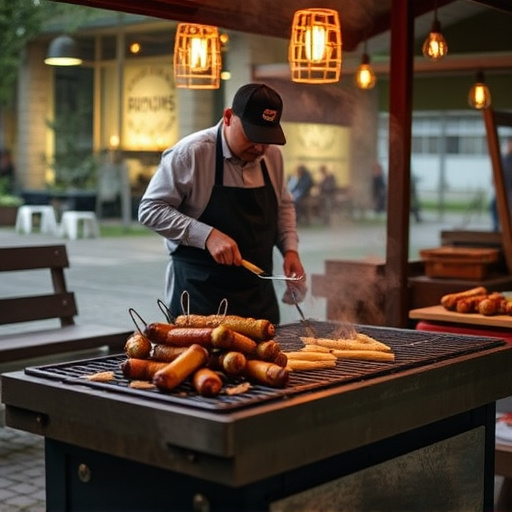
When it comes to grilling ribs, there are three main cuts that dominate the BBQ scene: Baby Back, St. Louis Cut, and Spare Ribs. Each has its unique shape, marbling, and flavor potential, making them suitable for different cooking styles and preferences.
Baby Back Ribs are known for their tender meat and meaty bones, making them a popular choice for those who love the combination of crisp exterior and succulent interior. St. Louis Cut Ribs, on the other hand, feature more of a rack configuration with separated ribs, allowing for better marination penetration and easier grilling. Spare Ribs, often considered the most traditional BBQ cut, offer a generous amount of meat between the bones, making them ideal for slow-cooking over low heat until they become incredibly tender. Whether you prefer your ribs smoky, saucy, or dry-rubbed, these cuts provide a solid foundation for crafting that perfect barbecue masterpiece right on your grill.
– Selecting quality ribs: Freshness, marbling, and age
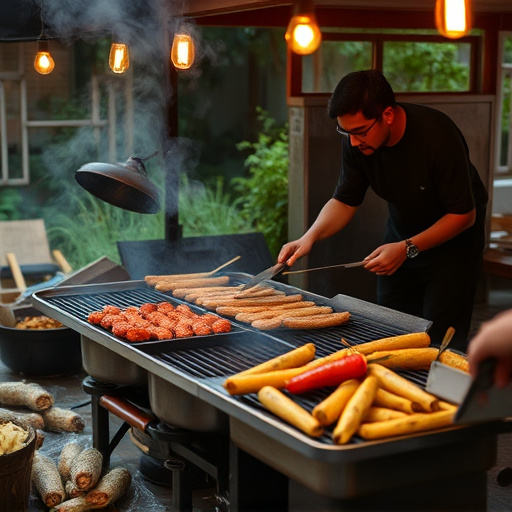
When crafting your barbecue masterpiece with grilled ribs, the first step begins with selecting quality ribs. Freshness is paramount; opt for ribs that have been recently cut and handled properly to ensure they remain tender and juicy upon grilling. Look for ribs with visible marbling—the streaks of fat throughout the meat—as this adds flavor and keeps the ribs from drying out during the cooking process. Age also plays a significant role in taste; older, well-marbled ribs often have a richer, more complex flavor profile that can elevate your BBQ ribs recipe to new heights.
Additionally, consider the cut of the ribs. Baby back ribs are popular for their smaller size and less bone content, making them easier to handle on the grill. Strips of meat from older animals may offer a heartier taste but require more time to cook and tend to be larger, which can be challenging for some grillers. The right choice depends on your preference and grilling experience, ensuring that you set the stage for creating a true barbecue masterpiece.
– Tips for storing and preparing ribs before grilling
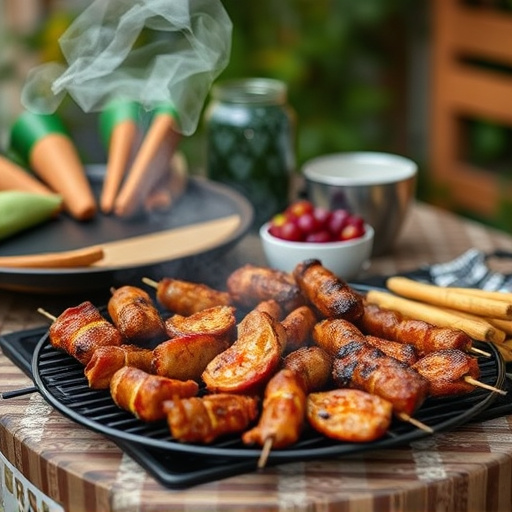
Before taking your grilled ribs to the barbecue, proper storage and preparation are key. Start by seasoning your ribs generously with a dry rub of your choice; this step enhances both flavor and moisture retention. Wrap the seasoned ribs tightly in plastic wrap or foil, ensuring they’re well-sealed to prevent drying out during storage. It’s best to marinate or prepare them a day in advance to allow the flavors to penetrate deeply.
For optimal results, store your ribs in the refrigerator until you’re ready to grill. This slow cooking process breaks down collagen, transforming it into gelatin, which makes the ribs incredibly tender and juicy when grilled. When it’s time to cook, remove the ribs from the wrap or foil and let them come to room temperature for about an hour; this prevents them from sticking to the grill grates.
